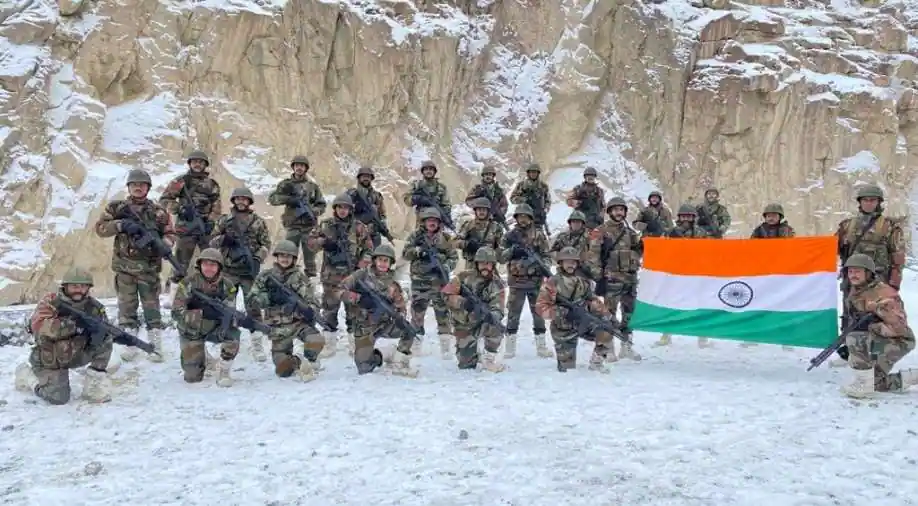

Rajat Gautam
Indo-China clash of Galwan valley
After almost a year-long military stand-off at their disputed border, a complex military disengagement is still underway between India and China in the eastern Ladakh region. The latest press release from India’s Ministry of External Affairs (MEA), following a phone conversation between External Affairs Minister S. Jaishankar and China’s Foreign Minister Wang Yi, noted the “outstanding issues” on the border and stressed that disengagement “remains unfinished”—attesting to the sensitive and nuanced nature of the negotiations process. Although political statements appear optimistic that India and China can stay engaged and address ongoing concerns, the question of how the boundary negotiation process will ultimately frame the “normalization” of India-China ties remains. To what extent is the expectation of resolving “outstanding issues” possible on a practical level, considering the historical complexities attached to the matter?
As the disengagement continues, India has also been pushed to reckon with the future of its relationship with China and other powers in the region. Post-Galwan, India has begun refocusing its multi-alignment strategy into a “pointed-alignment” by prioritizing more serious defense, security, and economic ties with specific countries in Indo-Pacific and beyond that are widely perceived as in broader strategic competition with China. Such Indian activism to have more pointed engagement, especially with the United States, Japan, and Australia (the Quad partners) certainly unnerves Beijing, and has long-term implications for the future of India-China relations.
Boundary Negotiations: Negation and the Fallout
The boundary dispute has long been a central point of contention in India-China relations. Under the leadership of Prime Minister Narendra Modi and President Xi Jinping, reaching an “acceptable boundries” with both diplomatic and political overture to the boundary dispute became a focal point of their negotiations and interactions. Both countries re-emphasized managing the differences pertaining to the dispute through the special representatives (SRs) meeting and stressed cooperation on long-term strategic issues. More importantly, both sides hoped that building political chemistry—through informal summits like those seen in Wuhan and Chennai—could bring the bilateral ties to a “new stage”.
However, the Galwan valley clash made it glaringly apparent that such political overtures are neither entirely practical nor functionally feasible. Now mostly seen as a turning point (primarily from the Indian point of view) in India-China ties and an indication of their collapsing “developmental partnership,” the clash brought to the forefront the deeply-rooted nature of the border dispute in India-China ties. However, while a turning point, the Galwan clash and the ongoing military stand-off should not be viewed in isolation but must be assessed in conjecture with the increasingly frequent standoffs in recent years with Chinese intent to change the status quo in different sectors of the India-China boundary. In this context, the Galwan clash only demonstrated that the outstanding border-related issues between India and China would remain unresolved and central to their bilateral—and regional—dynamics.
As reflected in the 11th Corps Commander talks, held on April 9, 2021, there are continued efforts to espouse upholding “peace and tranquility” on the border while focusing on guidance from the consensus of national leaderships. Yet, China has reportedly remained at four key friction points—including the Patrolling Point 15 (PP15) in Hot Springs and the PP17A near Gogra post. While the September 2020 five-point statement between China and India called for quick disengagement of troops, it was followed only weeks after by a Foreign Ministry statement from China noting that it did not recognize the “so-called ‘Ladakh Union Territory.’” In response, an MEA’s official response on September 29, 2020, categorically blamed China for not showing “willingness” to effectively pursue the border resolution (and negotiation) process. The diplomatic barbs and ongoing friction in disengagement underscore the contrast between the standard political language stressing “peace and tranquility” and the challenges on the border.
Similarly, addressing “outstanding issues” is recurrent rhetoric in India-China boundary negotiation processes. Over the years, various mechanisms (such as SRs, a Working Mechanism for Cooperation and Communication, and Annual Defense Dialogues), confidence-building measures (CBMs), agreements, and declarations (1993, 1996, 2003, 2005, and 2013) have become usual referral points to the dispute. Informal summits like the “Wuhan Spirit”, Chennai Summit (Mahabalipuram), and “Astana Consensus” have further sought to address the boundary dispute through a confidence-building note at the leadership level. Yet, despite several such mechanisms, agreements, CBMs, and “informal summits”, both sides have remained at an impasse—indicating their lack of actual military, diplomatic and political will, with the border conflict looking increasingly irreconcilable despite earlier optimistic attempts. Until the LAC’s demarcation is defined—which requires political, intense diplomatic, and on-ground military will and coordination—it is becoming apparent that existing mechanisms cannot perhaps effectively solve the dispute.
Rajat Gautam
I am an aspiring writer as I do it for my passion. I love to read a lot and educate people on new stuff like History, Ancient Civilizations, Wars, Economy, etc.